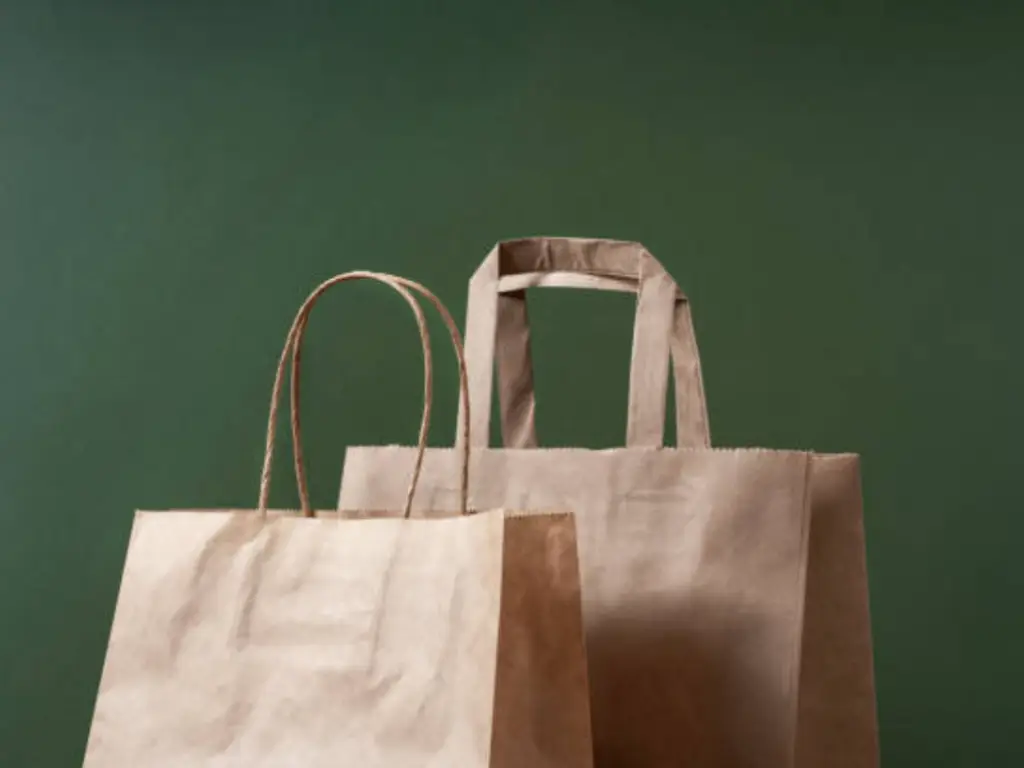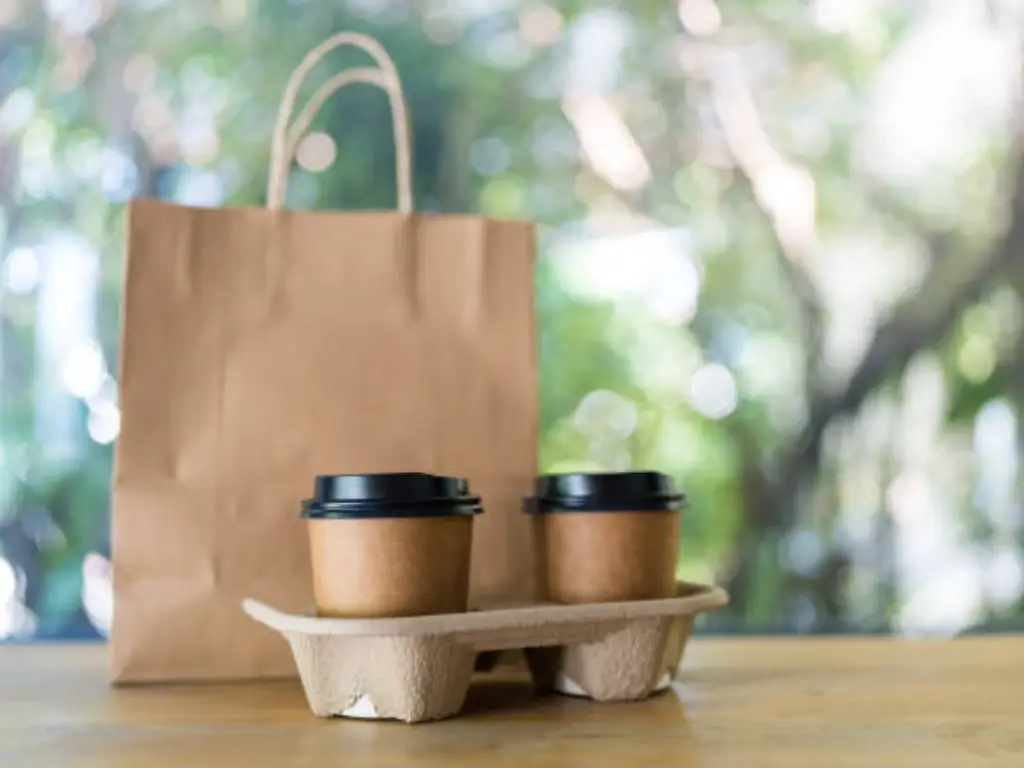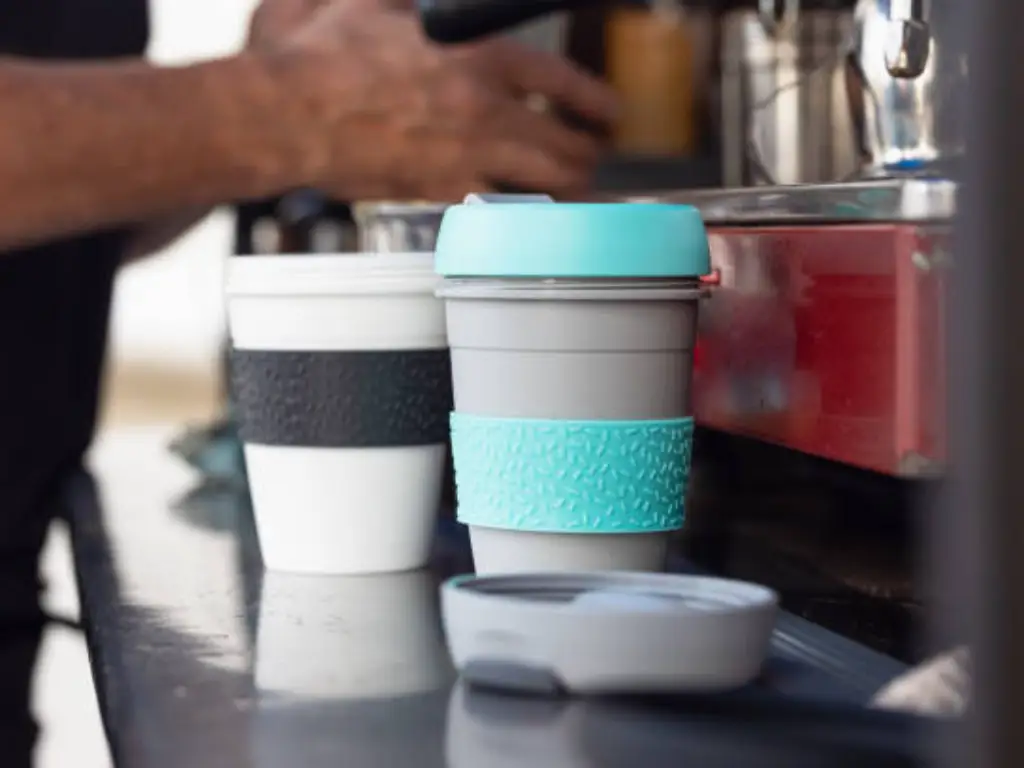
The paper bag is an object of mundane utility, a common vessel for groceries, gifts, and takeaway meals. Its existence is so integrated into the fabric of daily commerce that its origins and construction are rarely considered. Yet, the answer to the question of what a paper bag is made of opens a door to a detailed world of material science, industrial manufacturing, and critical decisions about sustainability. While the immediate answer is simply “paper,” the complete answer involves a journey that begins in a forest and ends with a product engineered for strength, safety, and purpose.
This breakdown will explore that entire journey. We will examine the raw materials and the chemical processes that transform them, the precise mechanical ballet of the manufacturing process, and the key characteristics that define a quality product. For businesses, understanding these details is not trivial; it is fundamental to making informed decisions about packaging that affect brand reputation, customer satisfaction, and the environmental footprint. This is the complete story of the paper bag.
The Primary Material: From Tree to Kraft Paper
The foundation of nearly every paper bag in circulation today is a specific type of paper known for its exceptional strength: Kraft paper. The term “Kraft” is German for “strength,” a fitting name for a material engineered to withstand the rigors of carrying weight. The creation of this durable paper is a multi-stage process that starts with a primary raw material: wood pulp.
This pulp is a slurry of cellulose fibers derived from trees, most commonly fast-growing softwoods like pine and spruce. The journey begins with wood chips, small, uniform pieces of wood that are ready for processing. These chips are loaded into enormous pressure cookers known as digesters. Inside, they are subjected to a chemical pulping process called the Kraft process, or sulfate process. This is the critical step that separates Kraft paper from lesser paper products. The wood chips are cooked in a hot, alkaline solution containing sodium hydroxide and sodium sulfide. This chemical bath aggressively breaks down lignin, the natural polymer that binds cellulose fibers together and gives wood its rigidity.
The removal of lignin is paramount. Lignin does not contribute to the paper’s strength and causes it to yellow and degrade over time. The Kraft process is exceptionally efficient at removing lignin while leaving the long, strong cellulose fibers largely intact. This is what gives Kraft paper its superior structural integrity and durability compared to paper made via mechanical pulping, which simply grinds wood chips and leaves most of the lignin in place.
Once the cooking is complete, the resulting mixture is washed and screened to remove the lignin-rich “black liquor” and any remaining impurities. This liquor is a valuable byproduct; it is often burned in a recovery boiler to generate energy to power the mill and to reclaim the cooking chemicals for reuse, making the Kraft process relatively self-sustaining.
At this stage, the material is a slurry of wood pulp, which can be processed in two primary ways:
- Virgin Wood Pulp: This is pulp created directly from wood chips as described above. It contains the longest and strongest paper fibers, resulting in the most durable paper bags. Products requiring maximum strength and reliability, particularly in food packaging and for carrying heavy loads, typically rely on virgin pulp.
- Recycled Paper Fibers: Alternatively, the raw material can be sourced from post-consumer recycled paper products. This material is fed into a pulper with water and chemicals to create a slurry, which is then cleaned of inks, glues, and other contaminants. While using recycled fibers is a cornerstone of sustainable practices and reduces the demand for new raw materials, the recycling process shortens and weakens the cellulose fibers. Consequently, paper made from 100% recycled content generally has lower tensile strength than its virgin counterpart. Often, a blend of virgin and recycled fibers is used to balance sustainability goals with the necessary paper bag durability.
The final pulp, whether virgin, recycled, or a blend, is then pumped onto large, fast-moving screens where excess water is drained away. A series of rollers presses the emerging mat of fibers into a continuous sheet, which is then dried to achieve its final strength and stability. The result is a massive roll of Kraft paper, the fundamental building block for billions of paper bags.
How a Paper Bag Is Actually Made
The transformation of a massive roll of paper into a finished, functional bag is a feat of high-speed mechanical engineering. The modern manufacturing process is almost entirely automated, with specialized machines performing a sequence of precise operations.
Below is a general outline of the industrial production process:
- Printing: If the bag is to be branded, the first step is printing. The large roll of Kraft paper is fed through a high-speed printing press. Two primary methods are used in the packaging industry: flexography (Flexo) and offset lithography. Flexo printing is more common for paper bags due to its speed and efficiency with simpler designs and brand colors. It uses flexible photopolymer plates and fast-drying inks to transfer the design onto the paper. High-quality print is essential for brand identity.
- Creasing, Cutting, and Forming the Tube: The printed paper web then moves into the main bag-making machine. A set of rollers and blades first creates precise creases where the folds will be. The paper is then cut to the correct length for a single bag and folded over a forming plate into a continuous, open-ended tube. A line of fast-drying, often food-grade, adhesive is applied to one edge to seal the seam.
- Bottom Forming: This is one of the most complex steps. The open-ended paper tube is sectioned off, and a series of mechanical “fingers” and folding plates perform a sequence of intricate tucks and folds to create the bag’s base. Adhesive is applied to the folded flaps, which are then pressed together to form a strong, flat, and often multi-layered bottom seal. This “block bottom” design is what allows a standard grocery bag to stand upright on its own.
- Handle Attachment: For shopping bags, handles are created and attached in a synchronized process. Flat or twisted paper cords are manufactured on a separate sub-assembly line. These cords are cut to length and glued onto a reinforcing paper patch. This entire handle unit is then precisely applied and bonded to the inside of the bag’s top edge using strong adhesive.
- Ejection and Bundling: The now-completed paper bags are ejected from the machine onto a conveyor belt. They are automatically counted, stacked, and compressed into bundles of a predetermined quantity (e.g., 50 or 100). These bundles are then packed into cartons for shipping to grocery stores, restaurants, and retailers.
If you’d like to learn more about the paper bag manufacturing process, please click here.
Exploring Different Types of Paper Bags

While the fundamental material is Kraft paper, paper bags are not a monolithic product category. They are manufactured in a wide range of styles, materials, and constructions, each tailored to a specific purpose. Understanding these different types of paper bags is key to selecting the right option for a given application.
Classification by Material and Color
- Brown Kraft Paper Bags: This is the most common type of paper bag. Its natural brown color is a direct result of the Kraft pulping process, which leaves the wood pulp unbleached. These bags are valued for their strength, cost-effectiveness, and the sustainable, natural aesthetic they project. The classic brown paper bag is a staple in grocery stores and for food packaging.
- White Paper Bags: These bags are also made from Kraft paper, but with an additional step: bleaching. The wood pulp is whitened using various bleaching agents to achieve a clean, bright white surface. This provides a high-contrast canvas for high-quality printing and is often chosen for luxury packaging, gift bags, and retail environments where a more premium brand identity is desired.
Classification by Structure
- Bags with Handles: These are the ubiquitous paper shopping bags. The presence of handles makes them suitable for carrying heavier loads over longer distances. The handles themselves come in different styles, such as twisted paper cord handles, which are strong and comfortable to hold, or flat paper handles, which are more economical and often used for lighter takeaway applications.
- Flat and Gusset Bags (No Handles): This category includes a wide variety of handle-less bags. The classic example is the “SOS” (Self-Opening Sack) bag used in American grocery stores for decades. Other types include flat merchandise bags for small items like greeting cards, and gusseted bags used in bakeries and delis for sandwiches and pastries. Their simple design makes them highly efficient to produce and use for quick, temporary packaging.
Classification by Paper Weight (GSM)
The durability and load-bearing capacity of a paper bag are directly related to the weight and thickness of its paper. This is measured in GSM (Grams per Square Meter). A higher GSM value indicates thicker, stronger, and more rigid paper.
- Low GSM (30-50 GSM): This lightweight paper is used for small, single-item bags where strength is not the primary concern, such as pastry bags, small snack bags, or pharmacy bags.
- Medium GSM (50-100 GSM): This is the standard range for most grocery bags and takeaway food bags. It offers a good balance of paper bag durability and cost, capable of holding several items without tearing.
- High GSM (100+ GSM): Thicker, more durable paper is used for high-end retail shopping bags, gift packaging, and bags designed to carry heavy loads like wine bottles. This paper provides superior structural integrity and a premium feel.
Key Features of a Quality Paper Bag

From a user’s perspective, the difference between a reliable paper bag and a frustrating failure lies in a few critical, often overlooked, construction details. For a business, these same details are a direct reflection of its commitment to quality and customer experience. A quality paper bag is not an accident; it is the result of deliberate choices in materials and manufacturing.
Here are the key features that define a well-made paper bag:
- The Strength of the Bottom Seal: The bottom of the bag bears the most stress. A quality bag features a secure, multi-layered seal with no gaps or weaknesses. Block-bottom bags should have cleanly folded corners and a wide adhesive area to distribute the load evenly. A poorly constructed base is the most common point of failure, leading to catastrophic spills and a negative customer experience.
- The Integrity of the Handle Attachment: On bags with handles, the points where the handles connect to the bag body are critical stress points. Reliable manufacturers use a reinforcing paper patch between the handle and the bag wall. This patch distributes the pulling force over a wider area, drastically reducing the chance of the handle tearing away from the bag when carrying heavy loads. The quality and application of the adhesive here are just as important as the seal at the bottom.
- The Quality of the Adhesive: The glue used to seal the side seam, form the bottom, and attach the handles is a crucial component. A quality bag uses strong, high-tack adhesives that maintain their bond under tension and across a range of temperatures. For food packaging, these adhesives must be non-toxic and food-safe, ensuring that no harmful chemicals migrate to the contents.
- The Uniformity of the Paper: High-quality Kraft paper should have a consistent thickness and a uniform distribution of paper fibers. Inconsistent paper production can result in thin spots or weaknesses within the sheet itself, creating potential tear points. A bag made from uniform paper will have predictable strength across its entire surface, providing dependable performance.
Paper Bags for Business: A Guide to Options
For any business in the retail, grocery, or foodservice sectors, paper bags are more than just containers; they are a critical component of operations, branding, and the customer experience. Selecting the right type of paper bag is a strategic decision based on the specific packaging needs of the products being sold. The packaging industry offers a vast array of solutions designed for these diverse applications.
For Foodservice & Takeaway
The demands of the modern takeaway and food delivery market require packaging that is both durable and functional. Bags must be strong enough to hold multiple food containers, resistant to minor leaks or condensation, and easy for both staff and customers to handle.
- Typical Solution: Heavy-duty Kraft Paper Bags with Round or Flat Handles. These bags are engineered for strength. The round, twisted handles provide a comfortable and secure grip for heavier orders, while the more economical flat handles are an excellent option for lighter meals. A quality foodservice bag, like those offered by specialist manufacturers such as Yoonpack, features a reinforced block bottom to handle the weight of stacked containers and is built from paper with a GSM high enough to prevent tearing, ensuring the meal arrives at its destination intact.
For Bakeries & Specialty Foods
Packaging for bakeries, coffee shops, and delis serves a dual purpose: preserving the freshness of the product and providing a convenient carrying method. These bags often need to handle items that may be greasy or warm and should present the product appealingly.
- Typical Solution: Specialized Food Paper Bags and Tin Tie Bakery Paper Bags. Standard food-grade Kraft bags may feature a light coating for grease resistance. For products like coffee beans or gourmet cookies, the Tin Tie Bakery Bag is an exemplary solution. As seen in Yoonpack’s product line, these bags often incorporate a resealable tin tie closure to maintain freshness after opening and a transparent window to showcase the product inside. This blend of functionality and presentation elevates the customer experience.
By matching the bag’s features to the specific demands of the business, companies can enhance operational efficiency, protect their products, and reinforce their brand identity.
Understanding Safety and Sustainability Certifications
In an increasingly conscious marketplace, claims of quality and sustainability must be backed by verifiable standards. For the paper packaging industry, several key third-party certifications serve as trusted benchmarks for safety, environmental responsibility, and ethical sourcing. Understanding these certifications is crucial for businesses looking to make responsible packaging choices.
- FSC (Forest Stewardship Council): This is one of the most important certifications related to paper products. An FSC logo guarantees that the wood pulp used to make the paper comes from forests that are managed responsibly. This includes protecting biodiversity, upholding the rights of Indigenous peoples, and ensuring sustainable forest management practices that prevent deforestation. Choosing an FSC-certified paper bag ensures that your packaging does not contribute to the destruction of the world’s forests.
- FDA (Food and Drug Administration): In the United States, any packaging material that comes into direct contact with food must be deemed food-safe by the FDA. This certification ensures that the paper, coatings, adhesives, and inks used in the paper bag are free from harmful chemicals that could leach into the food and pose a health risk. For any restaurant, grocer, or food producer, using FDA-compliant packaging is a non-negotiable requirement.
- BRC (Brand Reputation through Compliance): The BRC Global Standard for Packaging Materials is a leading safety and quality certification program used by over 3,500 suppliers in more than 80 countries. It provides a robust framework for manufacturers to manage product safety, quality, and legality. Achieving a BRC certification signals that a supplier’s production process adheres to the highest international standards, giving clients confidence in the integrity of their packaging.
For businesses, especially in the food sector, partnering with a manufacturer that holds these key certifications is not just best practice—it’s essential for brand safety and reputation. Companies like Yoonpack demonstrate this commitment by adhering to stringent BRC global standards and ensuring all materials are FDA-compliant and sourced from FSC-certified forests, providing clients with peace of mind.
Partner with an Expert for Your Packaging

As we’ve seen, the journey from a simple tree to a branded paper bag is a complex process where material science, manufacturing precision, and safety standards converge. A paper bag is far more than just paper—it’s a reflection of your brand’s quality and commitment. It is the final touchpoint in your customer’s experience and a tangible representation of your values.
Choosing the right specifications for your business—from sustainable materials to the perfect custom print—is a critical decision. Instead of navigating it alone, partner with a team that has perfected this process for global brands. A true packaging expert provides more than just a product; they provide guidance, reliability, and a deep understanding of the packaging industry.
If you are ready to create packaging that is safe, sustainable, and truly represents your brand, the experts at Yoonpack are here to help. Contact us today for a free consultation or to request a sample, and let’s build your perfect packaging solution together.






